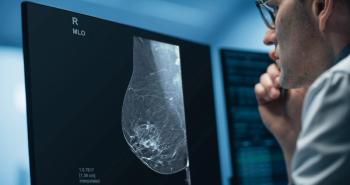
Tomosynthesis vs Chest Radiography for Pulmonary Nodule Detection
Digital tomosynthesis compared to chest radiography for pulmonary nodule screening and determining case management.
Digital tomosynthesis outperformed conventional chest radiography for lung nodule detection and determination of case management, according to a study published in
Researchers from the United States and Sweden conducted a multi-institutional, multireader study to compare the performance of digital tomosynthesis, dual-energy (DE) imaging, and conventional chest radiography to screen for and manage pulmonary nodules.
A total of 158 subjects (43 with normal findings) participated in the study. All underwent chest CT and imaging with conventional chest radiography, DE imaging, and tomosynthesis. The chest CTs were read by three experienced thoracic radiologists, who then recommended case management. Another five radiologists marked nodules and indicated case management by using images from conventional chest radiography, conventional chest radiography plus DE imaging, tomosynthesis, and tomosynthesis plus DE imaging. Results were further analyzed according to nodule diameter categories (3 to 4 mm, greater than 4 mm to 6 mm, greater than 6 mm to 8 mm, and greater than 8 mm to 20 mm).
The results showed that tomosynthesis was superior to conventional chest radiography for lung nodule detection and determination of case management. The maximum lesion localization fraction was higher for tomosynthesis than for conventional chest radiography in all nodule size categories (3.55-fold for all nodules). Case-level sensitivity was higher with tomosynthesis than with conventional chest radiography for all nodules (1.49-fold), and case management decisions showed better overall accuracy with tomosynthesis than with conventional chest radiography, as given by the area under the receiver operating characteristic curve (1.23-fold). The researchers did not find any differences in any specificity measures and DE imaging did not significantly affect nodule detection when paired with either conventional chest radiography or tomosynthesis.
Newsletter
Stay at the forefront of radiology with the Diagnostic Imaging newsletter, delivering the latest news, clinical insights, and imaging advancements for today’s radiologists.




























